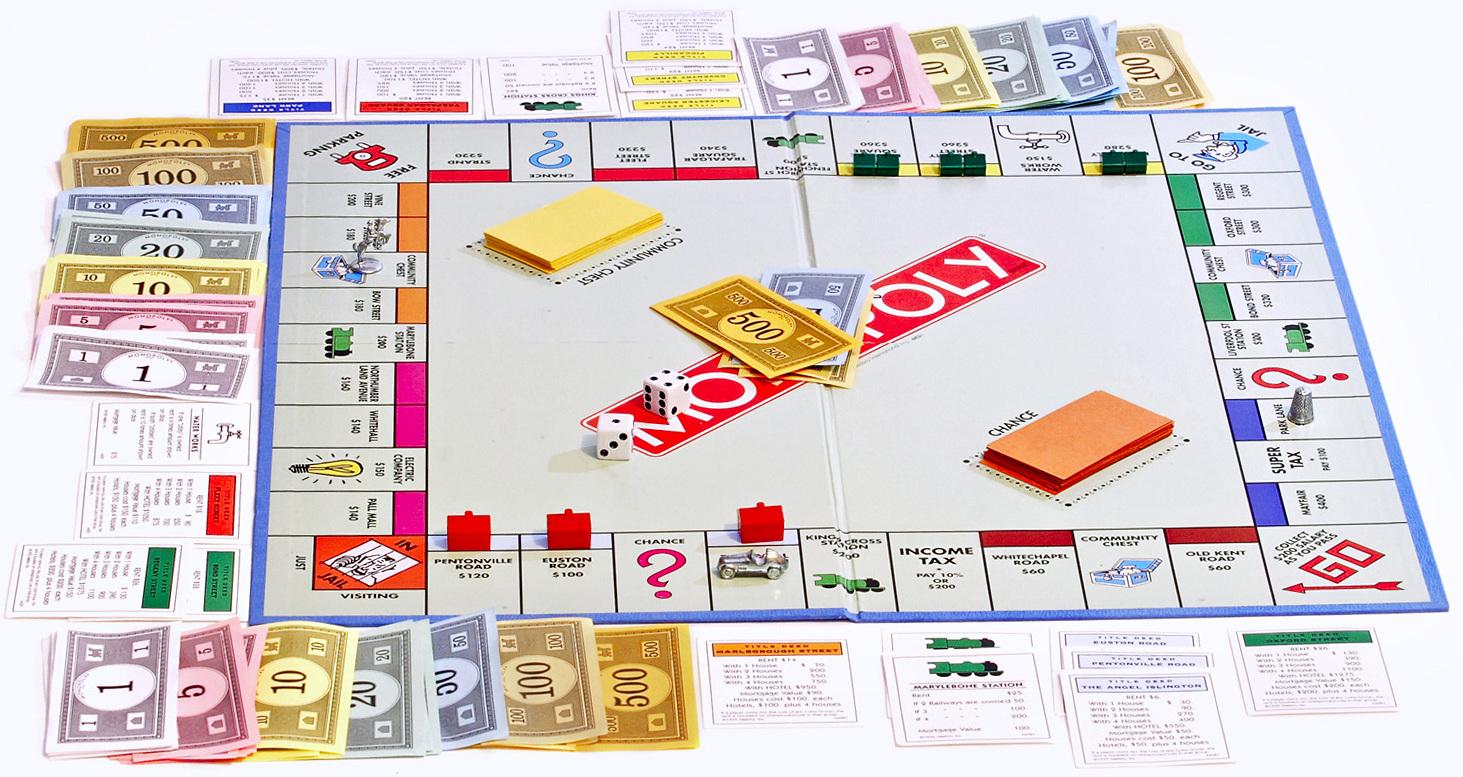This week, I played Monopoly, created by Lizzie Magie and Charles Darrow. Monopoly is a multi-player economics-themed board game where players buy, trade, and develop properties as they move around the game board. The game is intended for players aged 7 and up, and its target audience is any group, especially families, who enjoy board games with a large social component.
Formal elements
Monopoly is a game of multilateral competition, typical of a multiplayer game, requiring 2-8 players for gameplay. The objective of the game is to be the last player remaining on the board by avoiding bankruptcy, which is a game of outwitting one’s opponents. The game’s procedures and rules revolve around rolling dice to move around the game board and drawing cards. The key resources in Monopoly are money and properties. The conflict arises from player opponents all seeking to achieve the same objective — to bankrupt others — as well as responding to choices according to a player’s winning strategy. The outcome of the game is zero-sum: there is only one winner, whoever is last to become bankrupt.
Types of Fun
The game’s main type of fun is fellowship, as players must collude and compete with other players to buy and trade properties and collect rent.
Four Types of Game Balance
The first type of game balance does not apply to Monopoly since it is a multi-player game. The second type of game balance also does not apply to Monopoly, because all players start with exactly equal positions and resources (same amount of money and number of properties.)
In Monopoly, the third type of game balance is important: there are multiple strategies or paths to victory that can be followed within the game, and balance describes whether following one strategy is better or worse than following another. I found that in Monopoly, this type of balance is crucial, and is achieved because random chance is a critical factor in Monopoly: gameplay revolves around dice rolling and card drawing.
The fourth type of game balance also plays a big role in Monopoly. The game has several similar game objects — in this case, several different types of properties — that require balance regarding the objects’ cost/benefit ratio. This balance is achieved well in Monopoly. Even though not every property has the same characteristics (purchase price and rent price), each property has a similar cost/benefit ratio. This means that the cost of gaining access to a property is proportional to the in-game benefits acquired from that object. In other words, an expensive property does provide more in-game benefit than a cheaper one.
Three Ways to Balance Objects
Objects in Monopoly are balanced via transitive relationships. The relationship is not intransitive because no properties are inherently superior or inferior to others, and the relationship is not fruity because no property is distinctly unique from another. The relationship is transitive because each property has a similar cost curve, where the proportion of costs to benefits is relatively equal from property to property.
Moments of Success/Fails & Improvements
Our game of Monopoly took over 3 hours, which took much longer than expected. Most of the time was spent waiting for players to take their turn and make a decision, which made it boring for the players who were waiting for their turn. To improve the game, I would include a time limit for each turn to ensure gameplay doesn’t become too slow.



